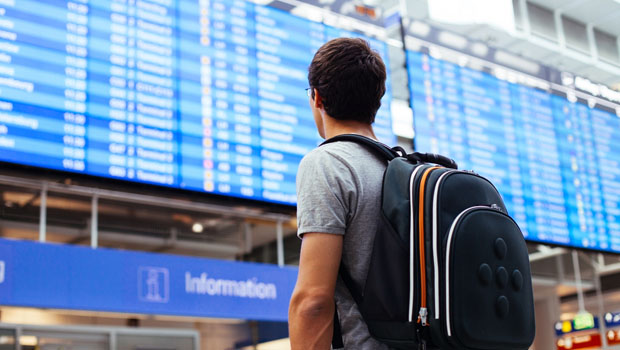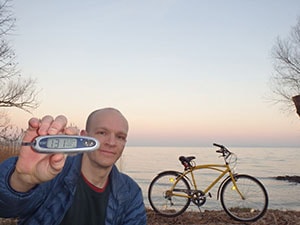
I’m watching for my stop on a rickety train in rural Hungary, but there are no signs and I can’t understand the announcements. This isn’t the time to worry about my blood sugar levels.
I’ve had Type 1 diabetes for over 30 years, and it hasn’t stopped me from doing anything or going anywhere. I’ve traveled throughout Europe, Japan, Mexico, Southeast Asia, China, and the U.S. On all of my trips, taking care of my blood sugar levels is my first priority, but that doesn’t get in the way of the adventure.
From personal experience, here are 6 tips on rules of the road for traveling with Type 1:
Know your blood sugar
Recently in the small Czech town of Cesky Krumlov, I had a small sandwich and coffee at a little café in the shadow of an ancient castle. My blood sugar was fine before the meal.
Two hours later, though, I was over 300. How? It must have been the dense bread. From then on, I started upping my dosage when eating bread in Europe, and my readings improved.
Even familiar foods may be prepared differently in foreign locales, so you can never be positive what will happen with your blood sugar. Check often, including every time you eat something new, even if you think you know what your reading is going to be.
Don’t get down about “bad” blood sugars
Throughout several weeks in Estonia and Latvia, I was consistently high. No matter what I did, I often was over 200. It was starting to get to me, but I didn’t give up. By patiently experimenting with my Humalog doses, my readings eventually improved to an acceptable level.
In times like these, it’s good to keep things in perspective. Uneven sugar levels happen to all people with diabetes, whether they are traveling or not. Wouldn’t you rather have yours on a cable car moving through the beautiful, snowy mountains of Slovakia than in your living room?
Double-check everything
One time I took a bus from Kuala Lumpur, Malaysia down to Malacca. On the way I realized I’d left my entire insulin supply in the drinks cooler of the guesthouse; I only had enough on me for a couple days, and no backup. I had to cut my Malacca trip short and catch a bus back to Kuala Lumpur.
Train yourself to always check and double-check the packing list in your head. This is especially important on early mornings when you’re groggy and running to catch the one daily bus from Point A to Point B.

Don’t worry so much about finding supplies
Once, in Chumphon, Thailand, I was running out of Humalog. I went to the small provincial hospital on the off chance that they might be able to help. It was quiet. A pigeon was flying around the waiting room. It wasn’t looking hopeful.
But the English-speaking doctor told me I could indeed get Humalog at an expensive private clinic in town, or I could buy ActRapid right there cheaply. After going back to my guesthouse and doing some online research, I chose the ActRapid. It served me fine for the next couple months through Cambodia and Vietnam.
While it’s good to research your destination beforehand, and talk with your doctor about your proposed itinerary, you can find a way to get nearly anything in the most unlikely of locales. People with diabetes exist everywhere, and they need supplies just like you do.
Always carry emergency food
If you’re walking a lot or guessing at insulin doses on the road, you’re going to occasionally end up low. I always make sure I have at least a small bottle of juice and a couple chocolate bars in my day pack. I don’t like to leave my room for even a few minutes without something.
Most places I’ve been have kiosks or small markets where you can find something suitable for low blood sugar snacks, but sometimes a town is small enough that it can be tough to find anything. It can even happen in big cities; in Warsaw, Poland, I was unable to find any shop open at 7 pm on a Sunday.
To be safe, assume you will be unable to find snacks later, and stock up when you can. Then always replace what you do use as soon as possible.
Learn the lingo
It can be helpful to learn the local word for “carbohydrate” so you can read the nutrition label, which is on most products. Also, it’s good to note that sometimes carbs can be listed either for a “serving size” or per 100 grams. Read it carefully so you know how much you’re eating.
As long as you check your blood sugar often, make smart adjustments based on your readings, and keep a positive attitude in the face of disappointing results, diabetes can’t stop you. Travel with diabetes, not in spite of it.
Now grab your supplies, buy a ticket, and go exploring!
Thanks for reading this Insulin Nation article. Want more Type 1 news? Subscribe here.
Have Type 2 diabetes or know someone who does? Try Type 2 Nation, our sister publication.